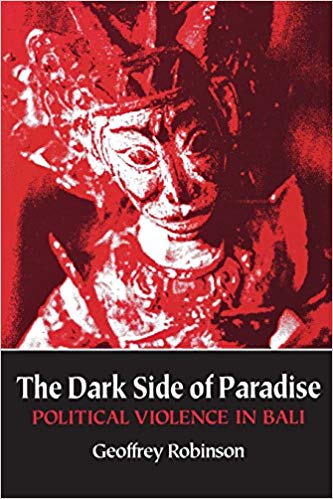
|
|
We see this as a work in progress. Tell us what you think and make suggestions for improvements. And please write us if you use the guide to tell us if you found it useful. Write us here. Talking Points/Discussion Guide: Shatter the Silence! Reveal the Truth, Acknowledge the Crime Further elaboration and links to additional reading on these points can be found on ETAN’s website here: www.etan.org/shattersilence. You may also want to print and hand out ETAN’s Backgrounder: Breaking the Silence: The U.S. and Indonesia’s Mass Violence. [see link to PDF at top of page].
1. Indonesia’s communist party (PKI) was an
above-ground, legal, legitimate political party in
1965 that had widespread support among the
population, as shown through its electoral gains
prior to 1965. Membership in the PKI was like
membership in any other political organization, and
the PKI had programs to assist the poor and support
labor. Although a handful of top PKI members helped
to plan the kidnapping and murder of military
officers on the morning of October 1 (mistakenly
called the “30th of September Movement”
or G30S), the vast majority of PKI members had no
knowledge of or involvement in the plot. Recently
discovered evidence reveals that Suharto and his
supporters had planned in advance to try and
exterminate the PKI, and took advantage of an
opportunity to seize power and usher in decades of
brutal authoritarian rule. 2. In the aftermath of G30S,
Indonesian army leaders and their paramilitary and
civilian allies oversaw the extra-judicial killing,
torture or imprisonment of hundreds of thousands of
alleged PKI members and others. The vast majority of
these people had done absolutely nothing wrong. 3.
The U.S.
government cheered on the killers, helped to give
them direction and provided crucial equipment
during the bloodbath. The United States
provided lists of suspected communists and other
enemies to the emerging government, many of whom
were killed, tortured, or imprisoned as a result.
The United States encouraged the violence, and
mainstream media reports in the United States at the
time reported on the killings as a welcome
development. U.S.
corporations greatly benefited from the military
dictatorship that seized power. 4. As portrayed in the The
Look of Silence, those who weren’t killed were
tarred with association with the PKI for the rest of
their lives. So were their families – for two
generations, family members of PKI associates have
been discriminated against and face social sanctions
from the general population. Their “guilt” was
printed on their government-issued identification
cards – they are identified as a relative of a PKI
member – which disqualified them from government
service and other jobs. For decades, anyone asking
questions about these events would be threatened or
branded a subversive. 5. Those responsible for the
horrendous violence have never been prosecuted for
their crimes, from the political leadership who
ordered the mass killings to the gangsters, thugs,
criminals and ordinary people who carried them out.
On the contrary, the perpetrators of these killings
are frequently portrayed
as heroes and saviors of the nation and many, as
shown in the films maintain powerful positions.
6. The “threat” of communism has been used in
Indonesia’s history to crack down on political and
social expression, organized labor, and political
dissent. Those who questioned this tactic were
frequently tarred with the communist brush, and
faced persecution. Suharto died in 2008 without ever
having faced justice for his crimes against humanity
and corruption. Oppenheimer began working on these
films when he went to Indonesia to document efforts
by plantation workers to have gear provided to
protect them from pesticides. According to
Oppenheimer, the organizing effort ended when the
company hired members of the paramilitary Pancasila
Youth (one of the groups featured in The Act of
Killing) to threaten the workers, who dropped their
demands because of memories of their parents being
killed for being in a union in the 1960s genocide.
They were afraid they could be killed at any time
because many of the perpetrators were still in
power. Many of the
Indonesians who worked on The Look of Silence and
its predecessor appear in the credits as
“anonymous,” out of fear for their safety. Adi, the
protagonist in The Look of Silence, and his family
have moved far away from their home region, again
for their safety. 7. Following General Suharto
ascension to the presidency of Indonesia, he was
given almost unconditional support from the West,
especially the U.S., to carry out genocidal policies
in Timor-Leste and West Papua, to commit atrocious
human rights violations throughout the archipelago,
to silence political debate, and to amass a huge
fortune through corruption. For decades, the U.S.
provided military equipment and training to the
Indonesian military. Aid occasionally restricted due
to grassroots and congressional pressure. Even
though the Indonesian military remains largely
unaccountable for past and ongoing human rights
violations, the U.S. is once again fully engaged
with the Indonesian military. 8. As a start, the U.S. should declassify and release all its records of the 1965-1966 period. It should also acknowledge its role in these events. Discussion of these events is finally opening up in Indonesia. We need a similar one here. In the fall, a resolution will be introduced in U.S. Senate on these points. Please, get names and contact information of those who attend the discussion and send them to etan@etan.org, so we can follow-up. Also urge people to sign ETAN’s petition here: http://chn.ge/1v50Edj and this one from Human Rights Watch: http://thelookofsilence.com/participate.
3. The Look of Silence shows a school class being taught that the killings were justified. Throughout both films are scenes where the killers are lauded as heroes in the media, at conferences and elsewhere. Are their parallels to events in the U.S.? How can individuals and communities counter such propaganda?
see also ETAN Backgrounder - Breaking the Silence: The U.S. and Indonesia's Mass Violence More about ETAN's Campaign to Shatter the Silence
|

















